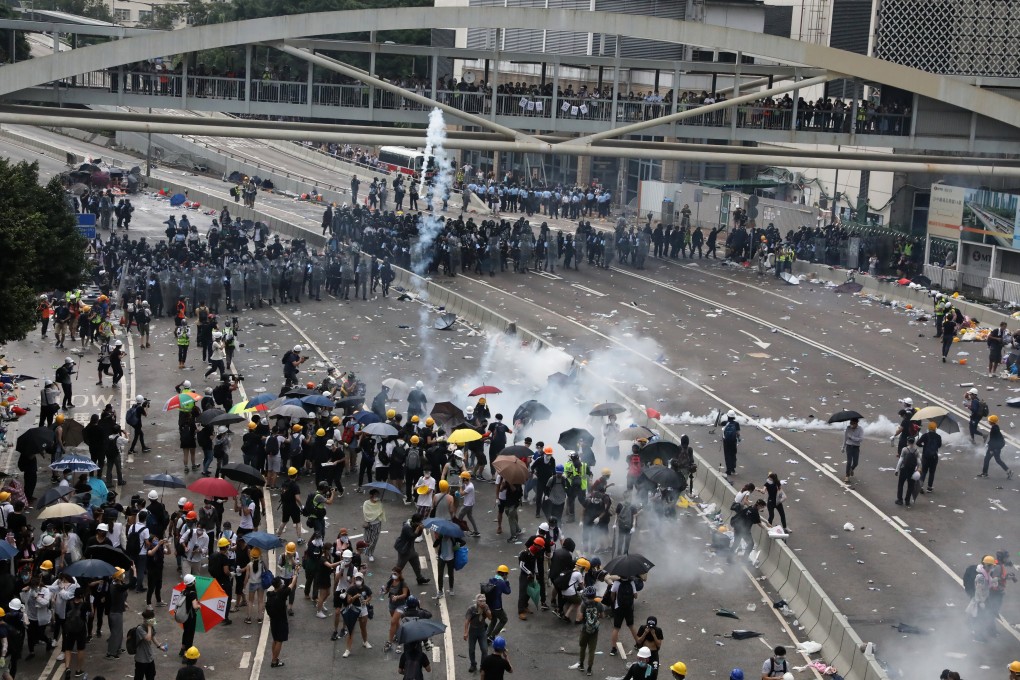Were violent clashes over Hong Kong extradition bill a riot or disturbance? What’s the difference and how do you define them?
- Chief Executive Carrie Lam is trying to sway public opinion of those involved and justify use of force, city academics say
- Language is all-important when setting tone of conversation, with one word judgmental and the other neutral

The Hong Kong government’s description of Wednesday’s protests as a riot was an attempt to justify the use of force and shape public perception of the unrest, two academics in the city have said.
Chief Executive Carrie Lam Cheng Yuet-ngor on Wednesday took aim at those protesting against the extradition bill, reprimanding them for orchestrating a “blatant, organised riot”.
Professor Stephen Chiu Wing-kai, chair professor of sociology at the Education University, said “riot” was a judgmental and evaluative term, while “disturbances” was relatively neutral.
“The government is trying to capture the moral high ground and boost its legitimacy in tackling the protesters by using ‘riot’ to describe the chaos,” he said.
Police Commissioner Stephen Lo Wai-chung used the Chinese phrase for “disturbance”, “so luen” in Cantonese, to describe the actions of some protesters. But police press officers later said Lo meant riot, which in Cantonese is “po dong”.
